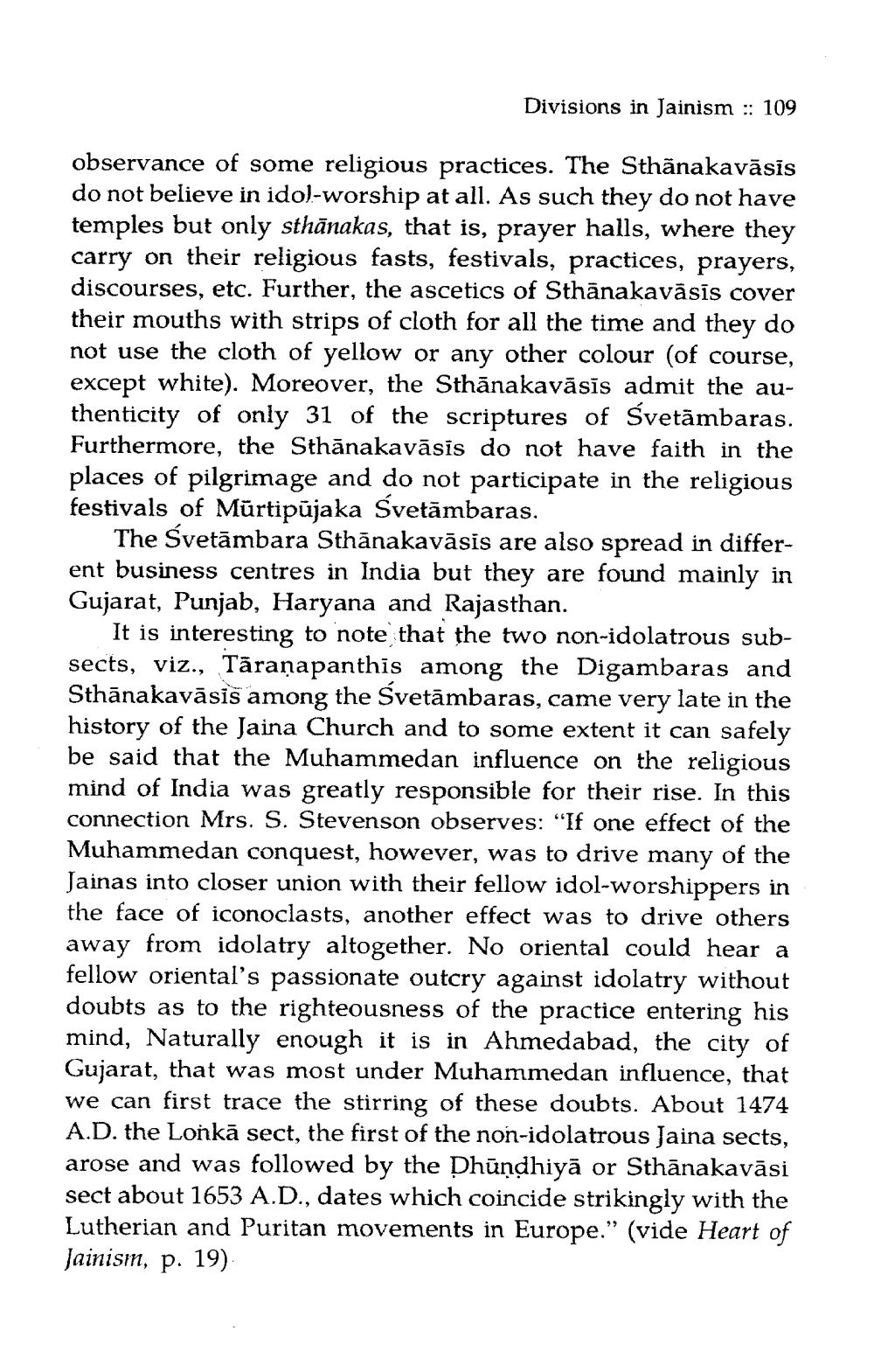________________
Divisions in Jainism :: 109
observance of some religious practices. The Sthầnakavāsis do not believe in idol-worship at all. As such they do not have temples but only sthānakas, that is, prayer halls, where they carry on their religious fasts, festivals, practices, prayers, discourses, etc. Further, the ascetics of Sthānakavāsīs cover their mouths with strips of cloth for all the time and they do not use the cloth of yellow or any other colour (of course, except white). Moreover, the Sthānakavāsīs admit the authenticity of only 31 of the scriptures of Svetāmbaras. Furthermore, the Sthānakavāsis do not have faith in the places of pilgrimage and do not participate in the religious festivals of Mūrtipūjaka Svetāmbaras.
The Svetāmbara Sthānakavāsis are also spread in different business centres in India but they are found mainly in Gujarat, Punjab, Haryana and Rajasthan.
It is interesting to note that the two non-idolatrous subsects, viz., Tāraṇapanthis among the Digambaras and Sthānakavāsis among the Svetāmbaras, came very late in the history of the Jaina Church and to some extent it can safely be said that the Muhammedan influence on the religious mind of India was greatly responsible for their rise. In this connection Mrs. S. Stevenson observes: "If one effect of the Muhammedan conquest, however, was to drive many of the Jainas into closer union with their fellow idol-worshippers in the face of iconoclasts, another effect was to driv e others away from idolatry altogether. No oriental could hear a fellow oriental's passionate outcry against idolatry without doubts as to the righteousness of the practice entering his mind, Naturally enough it is in Ahmedabad, the city of Gujarat, that was most under Muhammedan influence, that we can first trace the stirring of these doubts. About 1474 A.D. the Lonkā sect, the first of the non-idolatrous Jaina sects, arose and was followed by the Dhūndhiyā or Sthānakavāsi sect about 1653 A.D., dates which coincide strikingly with the Lutherian and Puritan movements in Europe." (vide Heart of Jainism, p. 19)




